The years 1940–1949 were ones of continuous horror for the Greek people.
When the Second World War (WWII) ended in 1945 and the rest of Europe was beginning to rebuild itself, Greece entered into a second war, more vicious than that fought against the Axis powers. If eight percent of the population of seven million had died or been killed during WWII, the Greek civil war (GCW) brought that figure up to ten percent.
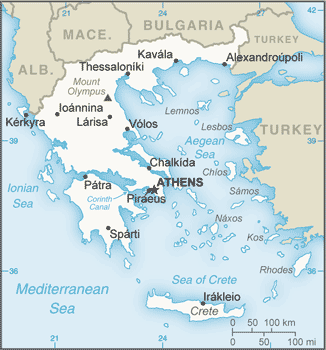 |
After the First World War, Greece did not enjoy political stability, enduring repeated coups d’état and dozens of governments. Although Greek communists had been a serious threat to all Greece’s frequently changing governments, the struggle between monarchists and republicans was also bitter.
Despite pro-German sympathies the Greek government remained neutral at the outset of World War II. When the country was invaded by Italy, Greece became an Allied nation in 1940. Although the Italian invasion was repulsed, by May 1941 when German troops swept through the Balkans, Greece was also occupied and partitioned among Italian, German, and Bulgarian forces. The occupation was brutal: the people were crushed and the land and whatever grew or was built on it decimated.
The period of Greek civil strife is commonly divided into three “rounds”. The first one began in 1943, long before WWII was over. At that point, the communist-supported Greek resistance movement that fought the occupation—the National Liberation Front (EAM)—and its guerilla units—the National People’s Liberation Army (ELAS)—found themselves fighting at times against their rival in the resistance, the National Republican Greek League (EDES).
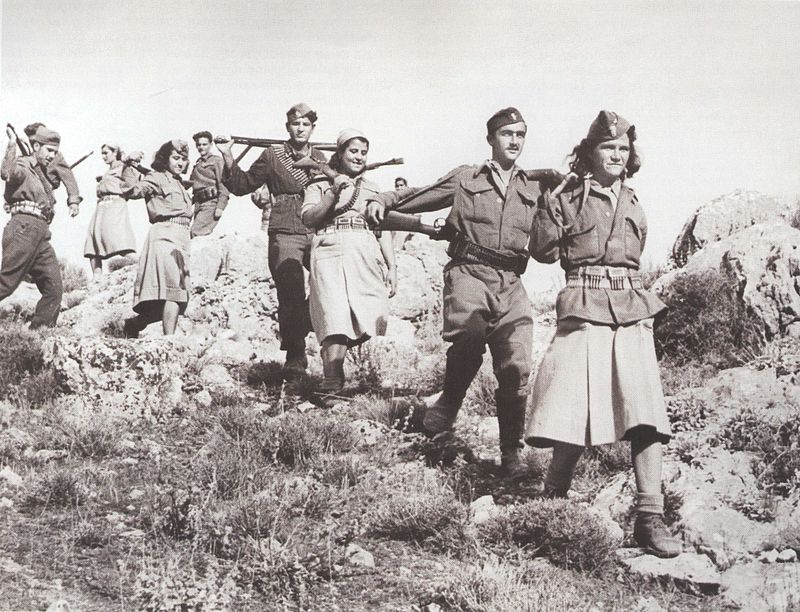 |
In May 1944 the communists appeared to be gaining the upper hand in most of the country. In areas under their control they launched a terror campaign against their opponents. When liberation came in October 1944, Greece was in a state of crisis, which soon led to the outbreak of another round of violence.
By early December of that year, round two (Dekemvriana, the December events) erupted. The regular Greek National Army (GNA), assisted by British units, crushed the ELAS forces. The conflict appeared to have been settled by the Varkiza Agreement, February 1945. The communists accepted defeat and agreed to disband, and the government consented to general amnesty of EAM/ELAS members.
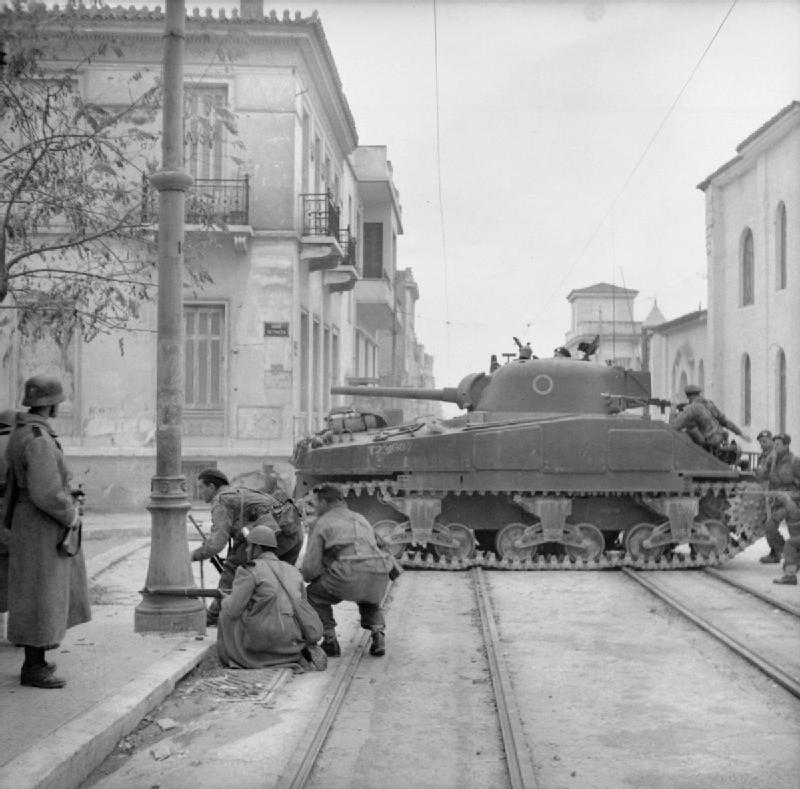 |
| Operations against ELAS in Athens, 1944 |
Neither side fully abided by the agreement: a government-backed terror campaign was launched against the EAM/ELAS members and supporters, and the left did not fully comply with its obligation to surrender all weapons. The remnants of EAM went underground and the ELAS fighters retreated to the mountains to conduct guerilla warfare.
In December 1946, they renamed themselves the Greek Democratic Army (DSE) and were completely controlled by the Greek Communist Party (KKE). The DSE was assisted by the new communist regimes of Albania, Bulgaria and Yugoslavia. The third round, the civil war proper, was only a matter of time.
This change in tactics proved a fatal mistake. Manpower shortage prevented the DSE from conducting a successful conventional warfare. Its guerilla style—hit-and-run attacks—had been much more effective. The GNA (heavily supplied by American instructors, weapons and materiel from the Truman Administration) now proved its superiority in manpower, weapons, and particularly air-force. Indeed, in March 1946, ELAS guerillas attacked a police station in the village of Litochoro killing its occupants, an event that signaled the beginning of the third round. A series of successful attacks and wide grassroots support encouraged the KKE’s leadership (September 1947) to change its strategy from that of guerilla to full scale conventional military warfare.
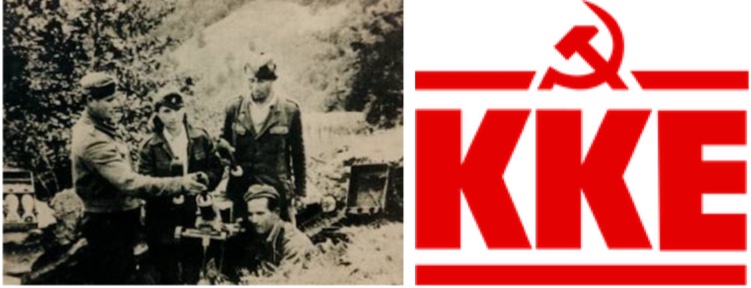
DSE fighters, circa 1947 (left) and the Greek Communist Party (KKE) logo (right)
Several other mistakes also proved critically detrimental to the communists’ efforts and eventually doomed it to failure.
Greek public opinion tilted against the communists because of the evacuation (or abduction) of close to 28,000 Greek children to safe havens in the Balkan countries (or, according to government sources, to training centers that were meant to turn the children into a communist avant-garde military force, à-la-the Ottoman Janissaries, to enforce communism around the globe).
In addition, the growing share of Slavic Macedonians within the DSE caused many Greek citizens to fear that they harbored separatist interests that would lead to the disintegration of Greece.
The GCW was not only a bitter internal struggle between two ideologically irreconcilable Greek camps—derogatively labeled “monarcho-fascists” and “bandits”—each envisaging and proposing diametrically opposed programs for the rehabilitation and future of their war-devastated country. The GCW was also an end-game among the Allies to tie up the loose ends of their spoils-of-war agreements.
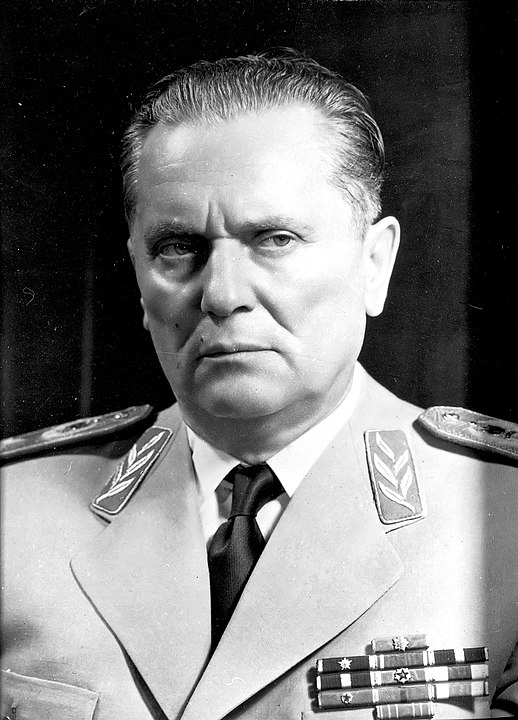
The gravest KKE mistake was the support given (in late 1948) by its leadership to Stalin, in the latter’s row with the “renegade” Yugoslav leader Tito (left). Yugoslavia had been the main training and supply center of the DSE, but the moment the KKE supported Stalin and condemned Tito, the latter severed his military and logistics ties with the DSE (July 1949). Without Tito’s support, the communist forces suffered a defeat three months later in the last battles of the DSE on Greek soil, in the mountains of Grammos and Vitsi.
It was one of the first conflicts of the Cold War: Greece was the only place in Central, Balkan and Eastern Europe where communism attempted, but failed, to take power.
The civil war was further complicated by the fact that while the communists may have enjoyed considerable grassroots support in Greece itself, their putative ally, the Soviet Union, had other fish to fry. In an agreement (unknown to the Greek left) Moscow had agreed with Great Britain not to support communism in Greece, apparently in exchange for the Soviets having the upper hand in the rest of Eastern Europe. Deprived of their own great power backing, Greek communists were hardly a match for their British and American-backed opponents
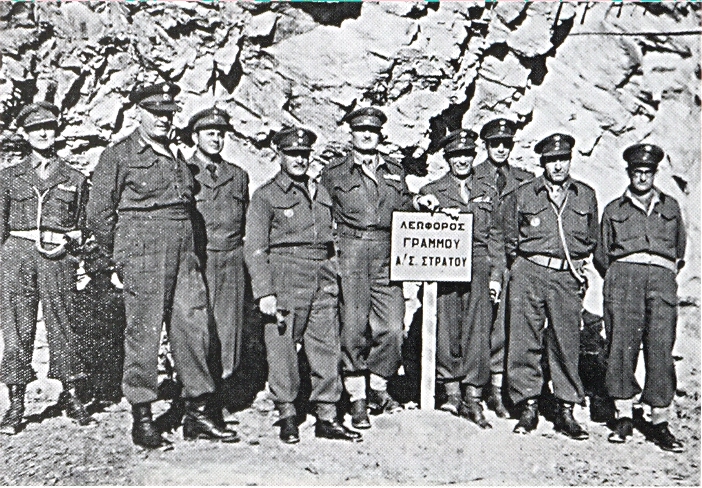 |
| Victorious Hellenic Army in Gramos, circa 1949. |
The civil war left Greece in a greater economic crisis than the country suffered as a result of the German occupation.
Of a population not much greater than seven million, well over 100,000, possibly close to 150,000, perished in the civil war. One million became homeless and 28,000 children “disappeared” (to become ardent communist fighters or taken abroad for their own safety).
A deep political polarization prevailed in Greece, resulting in the imprisonment and execution of tens of thousands. A vehemently right-wing, anti-communist military establishment led the country, culminating in the rise of the military junta of 1967-1974. The abolition of the colonels’ regime (1974), and Greece’s European Union membership (1981) buttressed Greek democracy and isolated its anti-democratic forces.
In the early 1980s, the center-left government allowed the return to Greece of veterans of the DSE who thirty years earlier took refuge in communist countries. Their return brought at least a certain measure of closure to the years of violence and destruction that accompanied the Greek Civil War.
